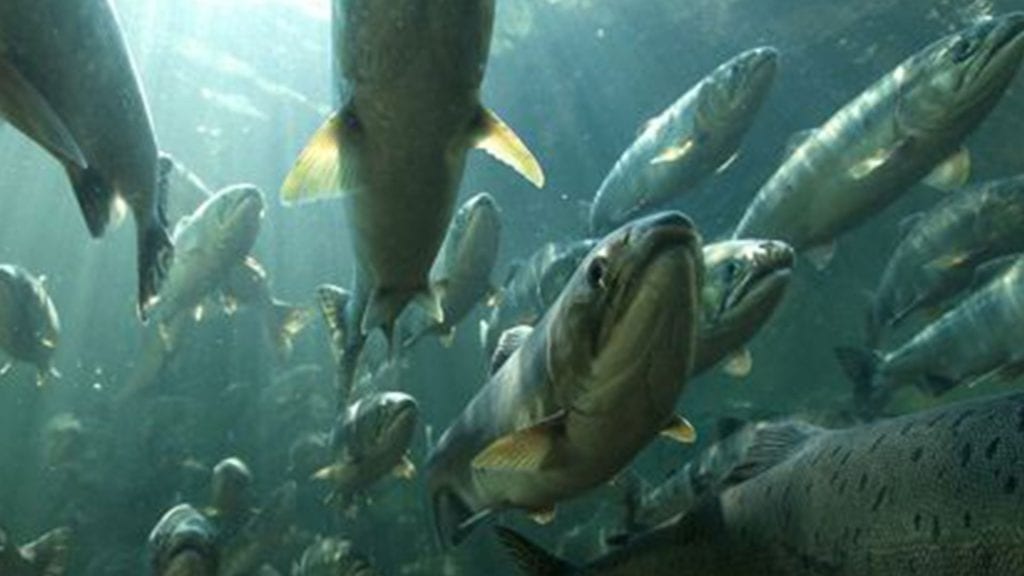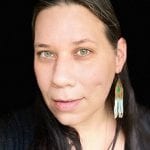
The night that Chief Darren Blaney of Homalco First Nation found out that fish farms would be phased out in his traditional territories, he celebrated over dinner with his wife.
“I was kind of skeptical all the way through, until I heard it from the minister’s mouth,” Blaney says.
“She talked about it being a really tough decision for her. They knew there were going to be job losses, but they had the courage to move forward with that. That decision takes some courage to implement.”
Blaney has been a part of the leadership team working to remove fish farms in an area known as ‘the Discovery Islands,’ near Campbell River, B.C, for years.
Fisheries Minister Bernadette Jordan made the announcement on Dec. 17, after consultation with seven First Nations which began on Sept. 28, 2020.

While Blaney dined with his wife, he made a few important phone calls, one to Bob Chamberlain, chair of the First Nations Wild Salmon Alliance, and another to Alexandra Morton, a biologist who has been working years to help protect wild salmon and has lobbied to have the pens closed.
“I told her and she just cried,” Blaney says. But the real celebration, he adds, will take place when “this virus is under control,” referring to COVID-19 and the restrictions it places on community gatherings.
‘It’s a historic moment’
The fish farms are being blamed for contributing to the decline of the wild Fraser River salmon population after scientists discovered sea lice and other parasites were being transferred between the species.
Jordan said the 19 sites would be phased out over 18 months to allow existing fish to “grow out” of the farms.
According to DFO, only nine of the sites contain fish while the others sit empty. The farms are run by companies based in Norway, who raise Atlantic salmon in Pacific waters.
The night she found out about the decision to phase out fish farms in the Discovery Islands, Morton turned off all of her electronics and started a fire.
“I stood there and watched the sparks go into the sky,” she says. “They looked like little fish, and I can’t even try to name the feeling.”
Morton says the Cohen Commission of Inquiry into the decline of Sockeye salmon in the Fraser River focused on the Discovery Islands because evidence suggested that the sockeye were going missing between Vancouver and the north end of Vancouver Island.
“The Discovery Islands are where one third of all B.C. wild salmon and most of the Fraser River sockeye salmon migrate through the waste flowing from seven million Atlantic salmon in cages,” says Morton.
“There’s evidence of amplified parasites, viruses and bacteria pouring out of these farms into the migration route of what was the largest wild salmon run in the world.”
Morton credits Blaney and other First Nations leaders for carrying the message of wild salmon to the government in a meaningful way.
“What they did is like opening an artery and suddenly the blood is going to flow again. And that’s what these fish are. They are the bloodstream, because they pick up the energy in the ocean, carry it up the mountains, and then they pour this energy down over the hills, creating forests for 100 species and cultures.”
But while the minister’s announcement was an important decision for the region, the effects will ripple across the coast and the country, Morton says.

“I’ve never felt this in my life. I’ve never felt that we humans did something that is actually restoring a very important central part of this ecosystem, we’re allowing life to continue and this is a trend that has to happen, or, you know, our children are gonna suffer incalculably, but I see a pathway to it now,” says Morton.
‘It’s time to rebuild’
Blaney knows there is more work on the horizon. He is already planning to show Jordan what enhancement projects could expand into.
Now that the arteries are open, says Morton, conservation projects stand a chance.
“Going forward, I’m going to make myself available to all nations who are concerned about their salmon, because these Indigenous governments are the only ones who really actually want the wild salmon — it’s bigger than ‘want’ — they insist that they are here,” she says.
Next Spring, Morton says she will be out on the water, “looking at everybody’s fish.”
“I’m going to watch these fish go to sea undestroyed. They’re going to be beautiful.”
While Blaney feels heartened by the government’s decision to stand behind First Nations in their fight to protect wild salmon, it’s up to his community and others to “help them rebuild,” he says.
“I know they’re resilient, but we need to help them, because they’re going to be so vulnerable.”
Blaney knows this decision was a hard one for Minister Jordan to make, and he also recognizes this may not be good news for everyone.
“I know the people that work in the industry are struggling with that decision, but at the same time we have been struggling without our salmon, commercial fishermen have been struggling with less and less days to fish. I think there’s a way that we can, the government should give them some support to move on land.”
Homalco teachings get reinforced through wild salmon, Blaney says, and it’s a critical part of why he has fought for the last fifteen years to remove fish farms in his territories.
“When the salmon are there, that’s a big feast. They have a celebration wherever they go, they feed everything in their path. When the salmon gets to us, it’s our feasting time,” Blaney says.
“It’s about culture and knowledge that gets passed on through the salmon, our teachings about sharing get reinforced in the salmon. The salmon does a potlatch in the ocean, it’s giving all over the place.”
And now it’s time for people to give back to the salmon, he says.
“Now we need to look at the rebuilding process, to support salmon stocks. I know they’re resilient and will rebuild, but we need to help them,” Blaney says. “It’s a part of our job as stewards of the land.”










